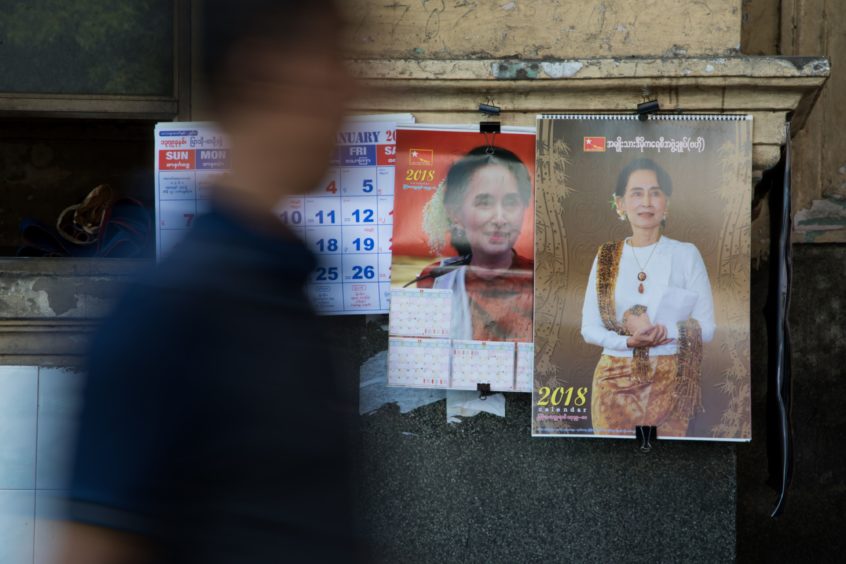 © Bloomberg
© Bloomberg Myanmar faces a potential energy crunch following a bloodless military coup that is set to delay urgent upstream investment and derail vital liquefied natural gas (LNG) import projects.
Crucially, more LNG will be needed to bridge the looming demand-supply gap, as meaningful progress on upstream exploration and development is not expected until 2023, given all the uncertainty.
The military, also known as the Tatmadaw, seized power from a democratically elected government on 1 February, jeopardising the country’s political stability and putting at risk much needed new upstream developments in the gas-rich nation. Myanmar, also known as Burma, is now under a 1-year state of emergency, declared the Tatmadaw.
Energy research company Wood Mackenzie estimates that new upstream projects worth $2 billion up until 2030 are yet to take final investment decisions, including Woodside Energy and Total’s A6 development, which now risks further delay.
If A6 does not progress as planned, an estimated 2 trillion cubic feet of gas supply is threatened, said Saloni Kapoor, analyst at Wood Mackenzie. Key developments, such as PTT Exploration & Production’s (PTTEP’s) Block M9, also known as Zawtika, coupled with A6 make up around 40% of the country’s expected supply until 2030. This supply is critical to make up for falling volumes from legacy fields, warned Kapoor.
“Four new fields with a total of 500 million barrels were expected to be approved in 2021 and 2022 in Myanmar,” reported Rystad Energy, a consultancy.
Posco’s Shwe Phase 3, with an estimated greenfield expenditure of $500 million, was lined-up for sanctioning in the first quarter of 2021, wrote Vishruthi Acharya, an upstream analyst at Rystad.
PTTEP’s Aung Sinkha and Total’s Shwe Yee Htun and Pyi Thit projects were also expected to be approved in 2022. However, certain delays could also occur for these developments, cautioned Acharya. “The startup of Posco’s Shwe Phase 2 and Shwe Phyu projects were anticipated in 2021 and 2022, respectively, but delays are likely here as well,” she added.
Myanmar’s production fell by around 15% from 2019 to 2021, and output was projected to gradually pick up from 2022. However, amid delays to sanctioning activity, production has more recently been estimated to rise only from 2023, assuming the Shwe Phase 2 and Shwe Phyu fields start up in a timely manner, reported Rystad. Significantly, further delays to sanctioning of projects could trigger more production declines from 2023 to 2027. As a result, production in 2025 could be about 8% less than current estimates, warned the consultancy.
More LNG demand
Given the rapid expansion in domestic demand for gas – especially for electricity generation – the government, prior to the coup, understood that it desperately needed to rejuvenate upstream investment. Several LNG import projects were proposed and sanctioned to help meet surging gas demand before new upstream production could be developed. Indeed, last year, Petronas delivered the country’s first-ever LNG cargo.
Moreover, with production not expected to hit desired levels in the coming years, combined with the delays to exploration campaigns, demand for LNG will rise further, said Acharya.
“Myanmar was looking forward to an active 2021-2022 period, but the current political turmoil will likely mean an extended wait until at least 2023 before meaningful progress is made on its extensive plans for exploration and development,” she added.
“Several LNG regas projects in Myanmar, including the existing small-scale terminal operated by CNTIC VPower and the proposed large-scale integrated LNG-to-Power project at Mee Laung Gyaing, are Chinese led. We see less impact on these projects from the recent military coup, given China has always engaged with both the military and the Aung San Suu Kyi-led government,” said Wood Mackenzie consulting director Mangesh Patankar.
However, “the Ahlone LNG-to-power project led by TTCL with Japanese partners and the Thilawa LNG-to-power project led by the Japanese consortium of Marubeni-Sumitomo-Mitsui, entailing a total investment cost of around US$ 2.7 billion could face delays,” he said.
Additionally, “incremental counter-measures from the U.S. could also make it difficult for LNG suppliers and ship owners to conduct business with Myanmar entities, which could negatively impact LNG imports into the country,” added Patankar.
Sanctions
Kaho Yu, a senior Asia analyst at geopolitical risk consultancy Verisk Maplecroft expects the U.S. to restrict foreign assistance to Myanmar and impose new sanctions on those involved in the coup, particularly military officials and associated entities.
Yet, “additional sanctions will likely have limited impact because many relevant individuals and entities were already sanctioned by the Trump administration in 2019 over the Rohingya crisis. Instead, any new sanctions would make it harder for responsible companies adhering to international best practice to keep operating in Myanmar due to reputational and ESG considerations,” he said.
“China’s response reflects that it is taking a ‘wait and see’ approach towards the coup. Beijing has adopted a pragmatic approach towards Myanmar for decades and has been engaging both with the military and the Aung San Suu Kyi-led government. For Beijing, it does not matter who rules Myanmar, as long as those in power are not anti-China,” added Yu.
“Any tough counter-measures from the U.S., such as sanctions, would drive Myanmar ever closer to China. Once the political turmoil settles down, we expect China to resume efforts to integrate Myanmar into its economic orbit. The current political uncertainty will certainly lead to business disruption, but we expect Myanmar to remain a long-term destination for Chinese investment, particularly in the energy, mining, and infrastructure sectors.”
